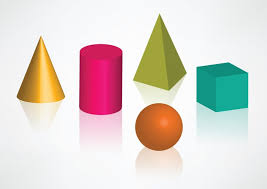Commom Core Standards
*Understand that the three digits of a three-digit number represent amounts of hundreds, tens, and ones
*100 can be thought of as a bundle of ten tens - called a "hundred"
*The numbers 100, 200, 300, 400, 500, 600, 700, 800, 900 refer to one, two, three, four, five, six, seven, eight, or nine hundreds
*Count within 1000: skip-counting by 5s, 10s, and 100s.
*Read and write numbers to 1000 using base-ten numerals, number names, and expanded form.
*Compare two three-digit numbers based on meanings of the hundreds, tens, and ones digits, using >,=, or < symbols to record the results of comparisions.
*Fluently add and subtract within 100 using strategies based on place value, properties of operations, and/or the relationship between addition and subtraction.
*Add up to four two-digit numbers using strategies based on place value and properties of operations.
*Add and subtract within 1000, using concrete models or drawings and strategies based on place value, properties of operations, and/or the relationship between addition and subtraction.
*Mentally add 10 or 100 to a given number 100-900, and mentally subtract 10 or 100 from a given number 100-900.
*Explain why addition and subtraction strategies work, using place value and the properties of operations.
Measurement and Data |
|
 |
|
|
|
Common Core Standards *Measure the length of an object by selecting and uisng appropriate tools such as rulers, yardsticks, meter sticks, and measuring tapes. *Measure the length of an object twice, using length units of different lengths for the two measurements; describe how the two measurements relate to the size of the unit chosen. *Estimate lengths using units of inches, feet, centimeters, and meters. *Measure to determine how much longer one object is than another, expressing the length difference in terms of a standard length unit. *Use addition and subtraction within 100 to solve word problems involving lengths that are given in the same units, by using drawings and equations with a symbol for the unknown number to represent the problem. *Represent whole numbers as lengths from 0 on a number line diagram with equally spaced points corresponding to the numbers 0,1,2,..., and represent whole-number sums and differences within 100 on a number line diagram. *Tell and write time from analog and digital clocks to the nearest five minutes, using a.m. and p.m. *Solve word problems involving dollat bills, quarters, dimes, nickels, and pennies, using dollar and cents symbols appropriately. *Generate measurement data by measuring lengths of several objects to the nearest whole unit, or by making repeated measurements of the same object. Show the measurements by making a line plot, where the horizontal scale is marked off in whole-number units. *Draw a picture graph and a bar graph to represent a data set with up to four categories. Solve problems using information presented in a bar graph. Geometry |
|  |
|
|
| Commom Core Standards *Recognize and draw shapes having specified attributes, such as a given number of angles or a given number of equal faces. Identify triangles, quadrilaterals, pentagons, hexagons, and cubes. *Partition a rectangle into rows and columns of same-size squares and count to find the total number of them. *Partition circles and rectangles into two, three, or four equal shares, using the words halves, thirds, half of, a third of, etc. and describe the whole as two halves, three thirds, and four fourths. Recognize that equal shares of identical wholes need not have the same shape. |
|